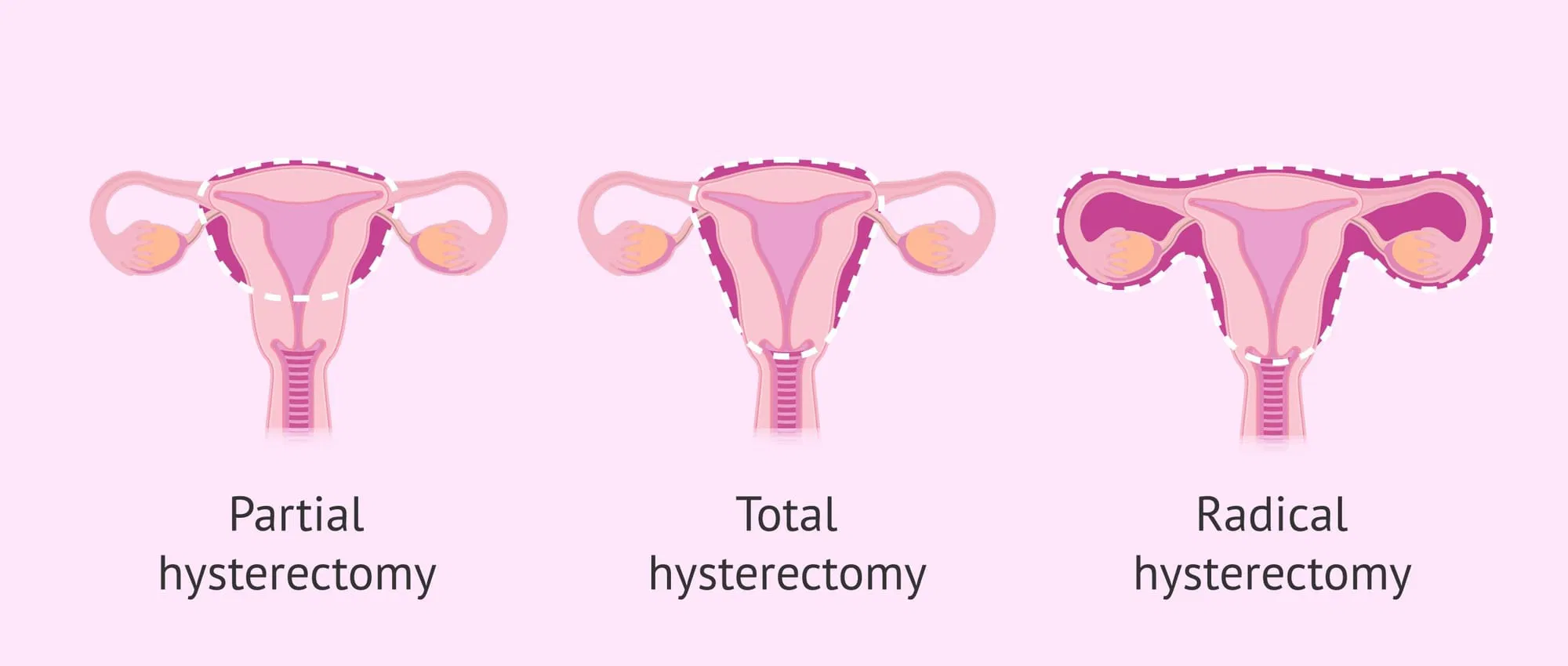What is Radical Hysterectomy?

Symptoms Indicating Need for Radical Hysterectomy
A radical hysterectomy is usually recommended when diagnosed with early-stage cervical cancer or certain types of uterine cancer. Symptoms that may lead to this treatment include:
- Abnormal vaginal bleeding, especially after intercourse or between periods
- Pelvic pain or discomfort
- Pain during intercourse
- Unusual vaginal discharge
- Diagnosed cervical cancer through biopsy
- Large precancerous lesions unresponsive to other treatments
Procedure / Treatment
Radical hysterectomy can be performed through:
Open Abdominal Surgery – A large incision is made in the abdomen to remove the uterus, cervix, part of the vagina, tissues, and nearby lymph nodes.
Minimally Invasive Surgery (Laparoscopic or Robotic-Assisted) – Small incisions are made to insert surgical instruments and a camera, allowing precise removal with faster recovery.
Steps involved include
- General anaesthesia administration
- Removal of the uterus, cervix, upper vagina, and supporting tissues
- Removal of pelvic lymph nodes to check cancer spread
- Closure of incisions and postoperative monitoring
Hospital stay usually ranges from 3 to 5 days for open surgery and is shorter for minimally invasive approaches. Recovery can take 6-8 weeks for abdominal surgery and 3-4 weeks for laparoscopic surgery.
Prevention
Radical hysterectomy itself is a treatment rather than a preventive measure. However, to reduce the risk of needing such a surgery:
- Regular Pap smears and HPV tests to detect cervical changes early
- HPV vaccination to protect against cancer-causing viruses
- Safe sexual practices to reduce HPV transmission
- Prompt treatment of precancerous lesions
Benefits of Radical Hysterectomy
- Complete removal of cancerous tissues, improving survival rates in early cervical cancer
- May eliminate the need for radiation therapy in some cases
- Reduced cancer recurrence risk when performed at an appropriate stage
- Helps determine the exact stage of cancer for further treatment planning
Types of Radical Hysterectomy
Type II (Modified Radical Hysterectomy)
Removes the uterus, cervix, upper vagina, and some surrounding tissues. Less extensive than Type III.
Type III (Classical Radical Hysterectomy / Wertheim’s Hysterectomy)
Removes the uterus, cervix, upper part of the vagina, parametrium (tissues around cervix), uterosacral ligaments, and pelvic lymph nodes. Common for cervical cancer treatment.
Laparoscopic Radical Hysterectomy
Performed using a laparoscope with small incisions, offering faster recovery.
Robotic-Assisted Radical Hysterectomy
Advanced version of laparoscopic surgery using robotic arms for precision.
